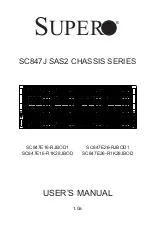
ES4408.1 Load Chassis - User’s Guide
6
Introduction
ETAS
1.1
Features
The ES4408.1 Load Chassis is a 19”/4 U housing for creating a system to simu-
late electric loads.
Using various boards makes it possible to simulate various loads to test the
behavior of ECUs in an HIL system. These particularly include pull-up/pull-down
loads with currents up to 150 mA and the simulation of electromagnetic injec-
tors up to 20 A.
The ES4408.1 Load Chassis can hold up to 12 boards which enables very flexible,
customized configuration.
The ES4408CON.1 Communication Interface both monitors internal functions
and enables communication with the environment. Addressing takes place
directly from the test system (e.g. LABCAR-OPERATOR) via an Ethernet interface
with standard connectors.
In detail, the ES4408.1 Load Chassis has the following features:
1.1.1
General Features
• Customized configuration thanks to modular structure
• Can be used in all standard test systems
• Can be used in many applications worldwide thanks to a wide-range
power supply of 100 - 230 VAC
• Minimal cabling necessary thanks to standardized connections
• Easy to expand thanks to modular system architecture
• Simple integration into the ETAS HIL system LABCAR thanks to a standard-
ized dummy load concept
• Complete integration into the LABCAR-OPERATOR software (from V4.1)
• Other technical features;
– Dimensions: 4 U x 19” x 480 mm (height x width x depth)
– Power supply: wide-range power supply unit
(secondary ±12 V, +5 V, +3.3 V, +24 V, GND)
– Active housing ventilation with six cooling vents
1.1.2
Slots
The ES4408.1 Load Chassis has slots with the following dimensions (see Fig. 1-1
on page 9):
• Five 3 U slots for high current loads of which:
– Three (14 HP) for injection loads (slot 0...slot 2)
– One 6 HP and one 4 HP slot for loads with position feedback, such as
the throttle valve, EGAS, etc. (slot 3and slot 4)
• Seven 3 U slots (of 4 HP each) for low current loads (slot 5...slot 11)
For more details of the loads available for these slots, refer to the section "The
System Components" on page 7.































